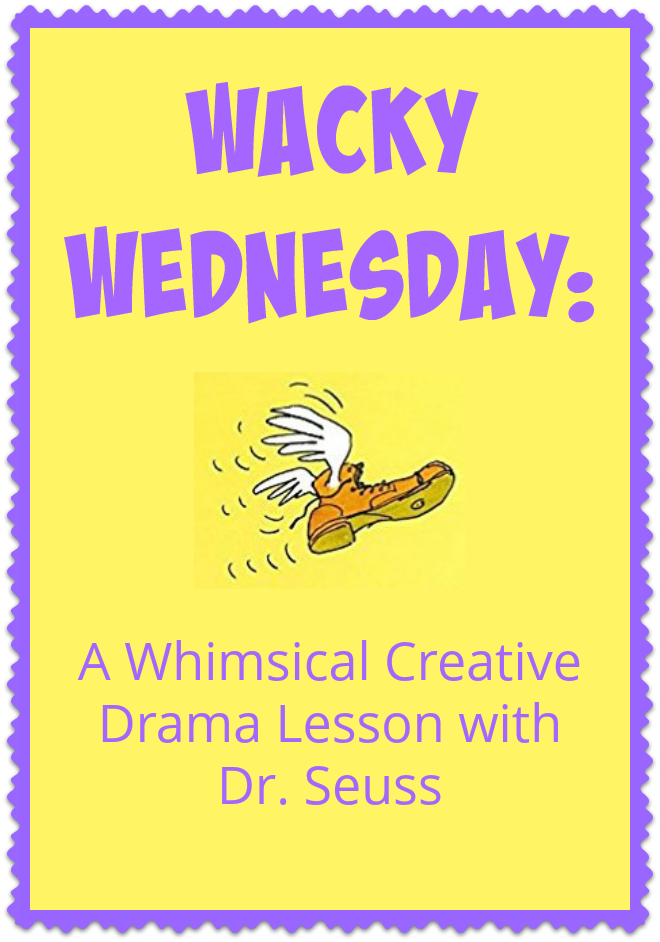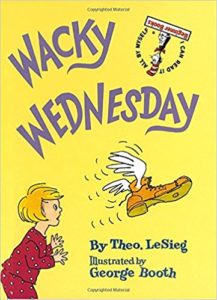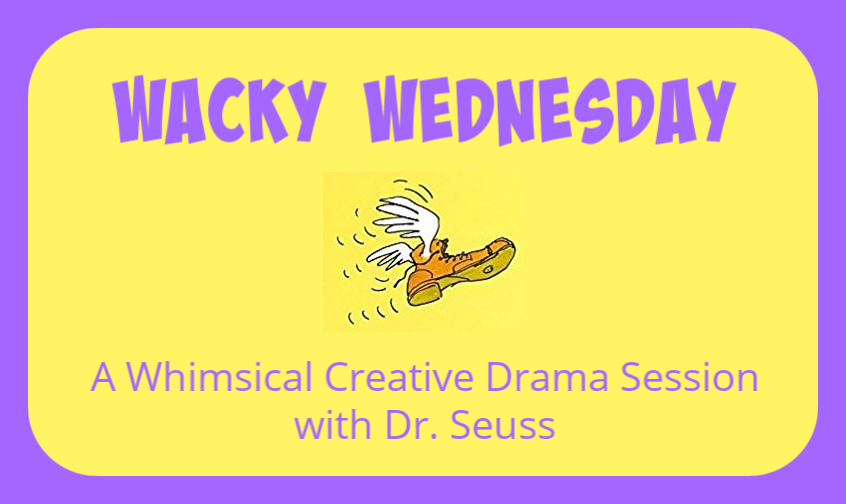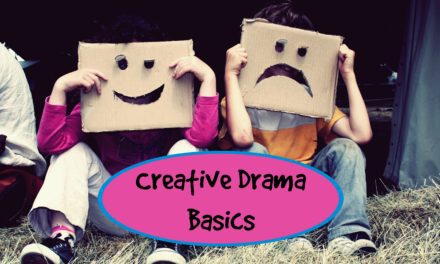
Wacky Wednesday is a book by Theo. LeSeig (aka Dr. Seuss) with pictures by George Booth. The concept of the book is that a boy wakes up and realizes that his whole town has gone “wacky”. Birds are chasing cats, shoes show up everywhere but on people’s feet, and misspellings abound. Each picture has an increasing number of wacky things, beginning with one shoe on the wall, and ending with twenty wacky things. This “Find the wacky things in this picture” concept lends itself to interactive reading, and the idea can be expanded to provide activities for creative drama.

The best day of the week to do this is a Wednesday, of course, but a “Tricky Tuesday” or “Freaky Friday” could also be created during class. These activities can be done in whatever order suits the needs of the class best – and spread out for an entire day if you have a class all day long. Elementary school teachers have the opportunity to add in weird language arts, science and math lessons to fit in with the day’s theme.
READ THE BOOK
The most important part of this book is the pictures, so make sure that all the kids are positioned to see the book. Explain to the class that they will each have a chance to identify the “wacky” things in the pictures, so they should try not to shout out, but raise their hands instead. As the book progress, it becomes harder to find everything that’s wrong, and if the kids can’t read yet, they will have a hard time finding the misspellings. Be prepared to help the class find everything, and make sure everyone gets a turn or turns. Pause often to ask: “What’s wacky about ____?”, so that the children get a chance to articulate how they identified the wacky things. The laughter may progress into uncontrollable giggling, but that’s a good chance to point out how fun wacky things can be.
MAKE THE ROOM WACKY
If there is a regular room in which the class meets, move the furniture around, bring in things that don’t belong, turn posters upside down, et cetera. You can do this before the class arrives, or have someone do it while you read the book to the class somewhere else. The class can help make things “even more wacky” when they enter the room. Have a student point out one wacky thing and then change one more thing. They may like to help “fix” everything as well (thanks for this suggestion, Melissa Pokala!).
Note: Some children have an aversion to sudden change in surroundings or routine. If you have a student who will react badly to everything being wacky, you may want to skip this activity, or prepare them in advance.
WACKY MUSIC
Find a wacky piece of music: it could be experimental, have goofy sounds, or be a silly song. (They Might Be Giants and Sandra Boynton’s albums have lots of silly song options.) Play the song, and have the class move around to the music. They should start by walking, and as soon as they begin feeling “wacky” they should move accordingly. It is important that you participate in this exercise, so that the class doesn’t feel awkward. If everyone is being weird, no one can be singled out. After the music finishes, sit down and ask them to share any images that came to them. What was wacky about the music? Did anyone pretend they were a strange sort of person or animal?
MY WACKY DAY
This is an art activity that starts with a guided imagery session. (For more information on guided imagery, read Spinning Inward by Maureen Murdock.) Make sure that everyone has her own space and is comfortable. After everyone closes their eyes, ask them to imagine waking up in their room one morning to find that it is WACKY WEDNESDAY. How do things look? Tell them to go through their morning routine and find out what else is wacky in their house. Wait a minute. Tell them that they are now at school/camp/day care and realizing that things there are strange, too. As they talk with their classmates, what is strange about them? Does everyone know that things are wacky? How will they get everything back to normal? After the guided imagery, the class members should draw pictures of what they saw during their wacky day. Ask them to trade pictures with a classmate and see if they can find out what was wacky about somebody else’s day.
WACKY COSTUMES
If you have access to dress-up clothes, give the children an opportunity to create an outfit for a wacky character. Have the class pair up and instruct them to design a costume for their partner – but it must be strange in some way. They should use their partner as a living dress form, placing clothes on him or her. After everyone is dressed up, the designers can show off their creations. The characters can do an action or say something to show what they are, although it is usually too hard to guess. The designers may want to explain how they chose clothes for the character. If everyone is dressed at the same time, it is an excellent opportunity to have a wacky celebration – what would happen at a party where everything was strange?
OTHER IDEAS
If you can bring in or make a snack in class, try a recipe from Roald Dahl’s Revolting Recipes or another weird food cookbook. Eat with popsicle sticks, straws or other weird utensils.
The students can be told ahead of time about Wacky Wednesday and bring in weird things for a wacky show-and-tell or come dressed wacky. Older students could share a “the strangest thing that ever happened to me” story.






